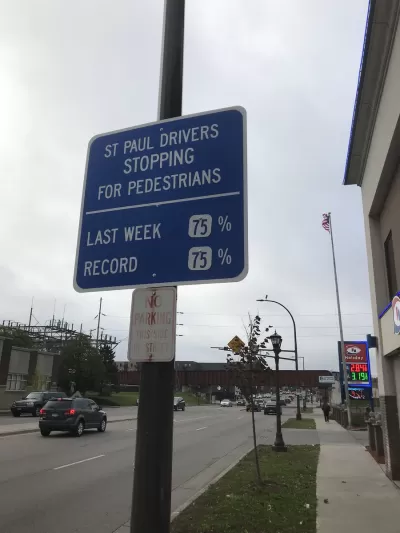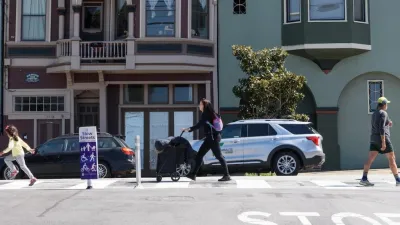Data is the key to crafting Vision Zero plans with community buy-in.

We’ve all read the alarming headlines: Driving kills more people in the U.S. than handguns. We’ve also likely witnessed cars weaving in and out of traffic, speeding by us like we’re standing still.
Even more distressing are the statistics. Preliminary data compiled by the National Safety Council show that 42,000 people died in motor vehicle crashes in the U.S. in 2020, an increase of 24% over the previous year. Pedestrian fatality rates, meanwhile, jumped 21% — the highest increase since 1975 – despite the fact that vehicle miles traveled dropped 13% due to the pandemic. According to the National Highway Traffic Safety Administration, a pedestrian is killed every two hours and injured every seven minutes somewhere in the U.S.
To counter this untenable state of affairs, an increasing number of communities nationwide are turning to a Vision Zero strategy, one that aims to eliminate all traffic fatalities and severe injuries while increasing safe, healthy, equitable mobility for all.
While many of the tactics that comprise Vision Zero are well known – from decreasing the legal speed limit to installing traffic calming measures (speed bumps, roundabouts, etc.) to improving roadway lighting and pedestrian crossings – the technological advances and data-driven analytics at the heart of those tactics’ effectiveness are often overlooked.
FULL STORY: Data-Driven Analytics Are at the Heart of Vision Zero Goals

Alabama: Trump Terminates Settlements for Black Communities Harmed By Raw Sewage
Trump deemed the landmark civil rights agreement “illegal DEI and environmental justice policy.”

Planetizen Federal Action Tracker
A weekly monitor of how Trump’s orders and actions are impacting planners and planning in America.

The 120 Year Old Tiny Home Villages That Sheltered San Francisco’s Earthquake Refugees
More than a century ago, San Francisco mobilized to house thousands of residents displaced by the 1906 earthquake. Could their strategy offer a model for the present?

BLM To Rescind Public Lands Rule
The change will downgrade conservation, once again putting federal land at risk for mining and other extractive uses.

Indy Neighborhood Group Builds Temporary Multi-Use Path
Community members, aided in part by funding from the city, repurposed a vehicle lane to create a protected bike and pedestrian path for the summer season.

Congestion Pricing Drops Holland Tunnel Delays by 65 Percent
New York City’s contentious tolling program has yielded improved traffic and roughly $100 million in revenue for the MTA.
Urban Design for Planners 1: Software Tools
This six-course series explores essential urban design concepts using open source software and equips planners with the tools they need to participate fully in the urban design process.
Planning for Universal Design
Learn the tools for implementing Universal Design in planning regulations.
Clanton & Associates, Inc.
Jessamine County Fiscal Court
Institute for Housing and Urban Development Studies (IHS)
City of Grandview
Harvard GSD Executive Education
Toledo-Lucas County Plan Commissions
Salt Lake City
NYU Wagner Graduate School of Public Service





























